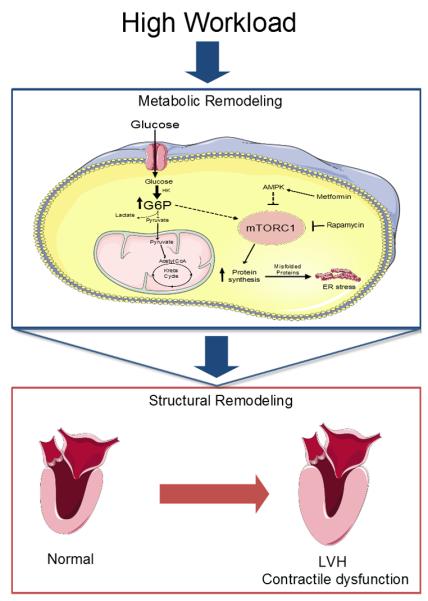Figure 6.

Proposed mechanism by which metabolic remodeling precedes and triggers structural and functional remodeling in the heart. Sustained pressure overload leads to increased glucose metabolism. However, a mismatch between glucose uptake and oxidation leads to accumulation of glucose 6-phosphate (G6P). This metabolite activates the mechanistic target of rapamycin complex 1 (mTORC1) by unknown mechanisms, resulting in increased protein synthesis and endoplasmic reticulum (ER) stress. As a consequence, the heart hypertrophies (increased protein synthesis) and fails (contractile dysfunction induced by ER Stress). Metformin and rapamycin decrease mTOR activity and may thus prevent LVH and HF. AMPK: 5′AMP-activated protein kinase. HK: Hexokinase-II. LVH: Left ventricular hypertrophy.
